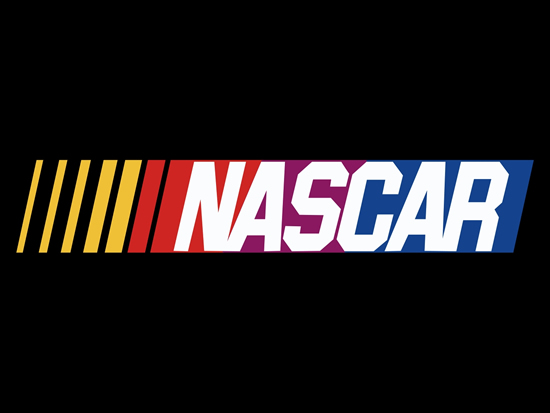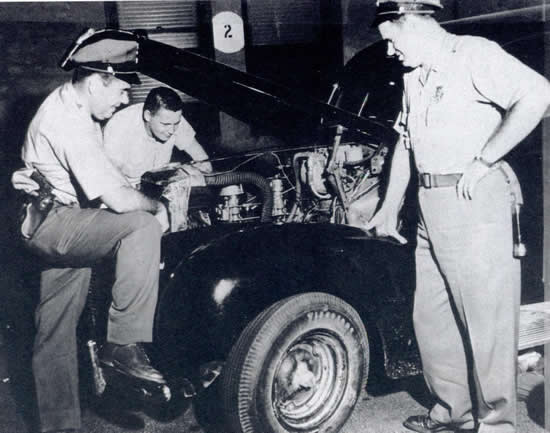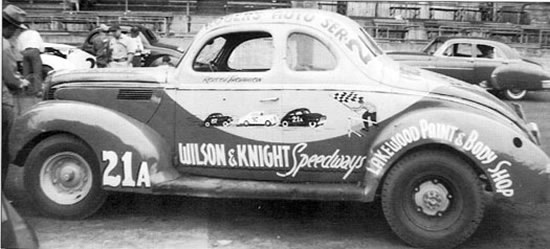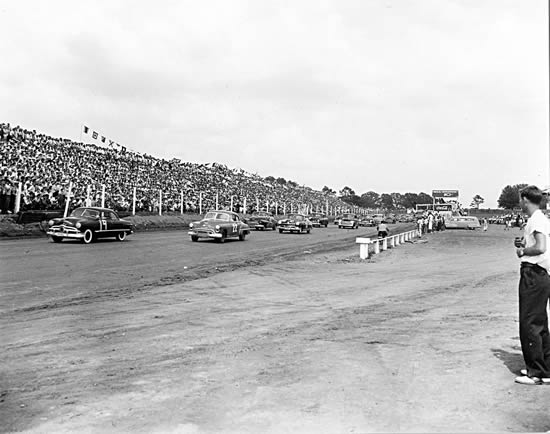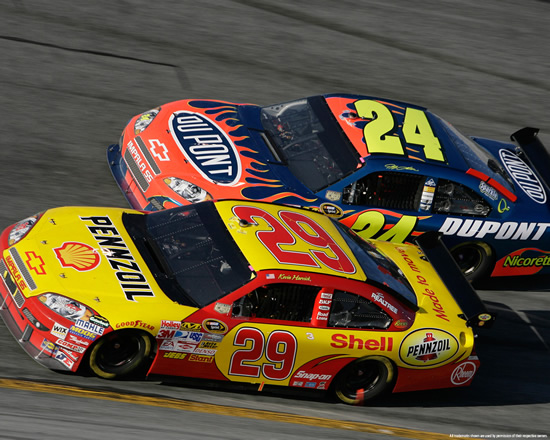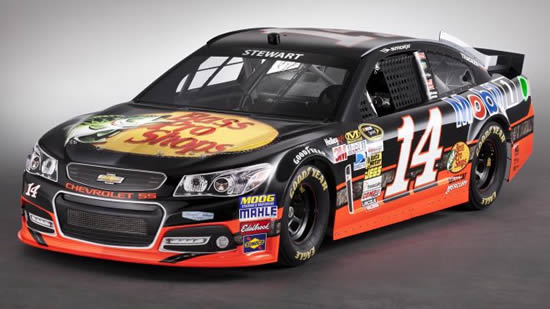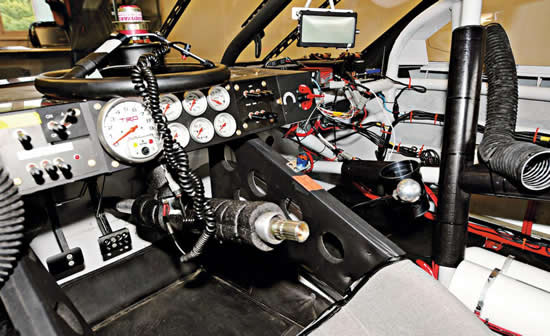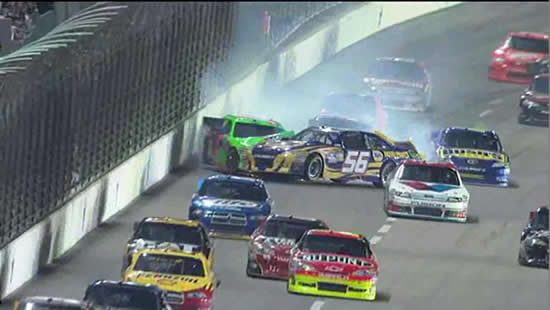To elucidate just how popular NASCAR (National Association for Stock Car Auto Racing) is in the States, it’s second only to the NFL for sporting TV viewing figures. Part of this love and fascination comes from the sport’s history and heritage. Stock car racing’s origins hail back to the 30’s and the prohibition era, and this ban of alcohol was the key factor into the birth of NASCAR.
Primarily taking place anywhere from Virginia to Georgia, moonshine operations (the illegal production and distribution of corn whiskey) needed fast cars to distribute their whiskey. These consisted of everyday cars (particularly Fords because they were light and cheap) completely stripped away to lose weight and gain space for mason jars full of ‘white lightening’. Moonshiners also modified their cars for maximum power to evade the fed’s (revenuers) standard issue economy cars and, enjoying the fast mountain roads, they’d also compete against each other in highway drag races. Eventually this progressed into forging circuits, digging crude tracks into pastures. Thus, the early stock car racing concept was born.
In fact, the earliest car owners, promoters and track owners were all involved in bootlegging moonshine at one time or another. So you see, what it boils down to is the fact illegal whiskey was the main ingredient into racing stock cars.
Apart from the advancements in car technology, media and mass sponsor deals, NASCAR is essentially the same now as it was all those years ago when locals went hell-for-leather around a track, desperate for a win. This is why – particularly in the old bootlegging states – people are so passionate about NASCAR. The drivers are heroes, and back in the 40’s and 50’s everyone wanted to emulate their local drivers by modifying their own everyday cars.
Today, the most popular form of NASCAR is the Sprint Cup Series, which dates back to 1949, then known as the Strictly Stock Series. The first ever Strictly Stock race was held at Charlotte Speedway, and along with the Daytona Beach (Daytona 500) course, both remain on the modern day calendar, which now consists of 36 races held over 10 months.
Driving In NASCAR
People who don’t really understand or follow NASCAR think of it as just a load of cars going around in circles. As most motorsports tracks feature many bends and opportunities to outbreak and over take at the end of long straights, NASCAR can come across this way. However, if you watch an entire race and understand how hard a driver works to make a pass, you’ll soon gain respect and find it highly entertaining.
Drivers travel at a constant 190+ mph, back-to-back, inches apart on a track with a 30-degree banking. “Drafting” is a popular way of making a pass – as the car in front pushes a hole in the air, the car behind can slip into it and gain speed, as there’s less air resistance. When the cars fly around the steeped bends, the cars become unstable and drivers are more likely to make a mistake, which any following cars can capitalise on. A controversial move is the “bump”, a technique that is as it sounds – a car can come up from behind and give the car in front a healthy tap on its left rear quarter, either moving the car out of the way or causing it to drift and lose control.
The Cars
Although the NASCAR cars are called “Stock Cars”, they are anything but – they may slightly resemble their stock counterparts, but that’s where all similarities end. The Sprint Cup Series machines use a front-mounted engine and a rear-wheel-drive design. The roll cage serves as a space frame chassis, which is then covered by a sheet metal body. Along with all the sponsor decals, the taillights and headlights are stuck on to help the race car resemble its production model.
Aerodynamic components consist of a front splitter, rear spoiler, NACA ducts in the windows, and the side skirts. No other aero devices are allowed onto the car.
The massive 850+ hp comes from a traditional overhead-valve V8 engine, with a cast iron block and a pushrod valvetrain actuating two valves per cylinder. These are limited to a 358 cubic inch displacement.
The cost of one season’s racing is in the region of $10-$20 million. A team can either build their own cars and engines, or they can buy from other teams.
NASCAR Standards:
Chassis: Steel tube frame with safety roll cage.
Engine: 5.86 L (5,860 cc) overhead-valve, 90-degree pushrod V8, two valves per cylinder.
Transmission: Manual four-speed.
Weight: 3,200 lbs (without driver and fuel) – 3,400 lbs (with driver and fuel).
Power: 865 hp unrestricted. 445hp with restrictor plate
Torque: 530 ft-lbs
Fuel: Sunoco E15 (15% ethanol) high-octane racing petroleum
Fuel Capacity: 17.75 gallons
Fuel Delivery: Electronic throttle-body fuel injection
Compression Ratio: 12:1
Aspiration: Naturally aspirated only
Tires: Goodyear slicks
Wheelbase: 110”
Length: 208”
Height: 53.5”
Width: 76.5”
NASCAR 2013
If you are one of these people who think NASCAR is a bunch of cars going around in circles or don’t fully “get” the appeal, I urge to pick a driver and watch an entire race. You’ll quickly see how exciting this sport is, especially the spectacular crashes and subsequent fistfights. NASCAR is colourful, fast, loud, dangerous, and ultimately thoroughly entertaining.

